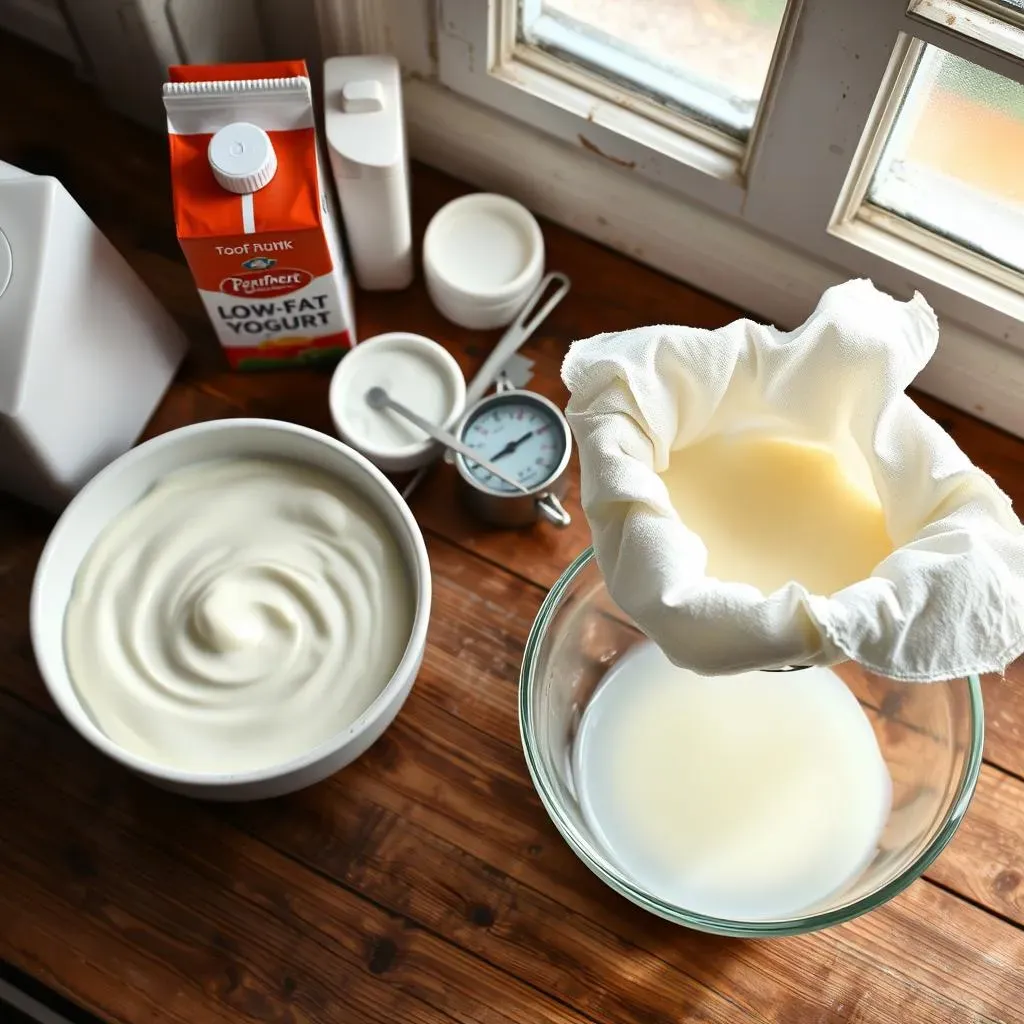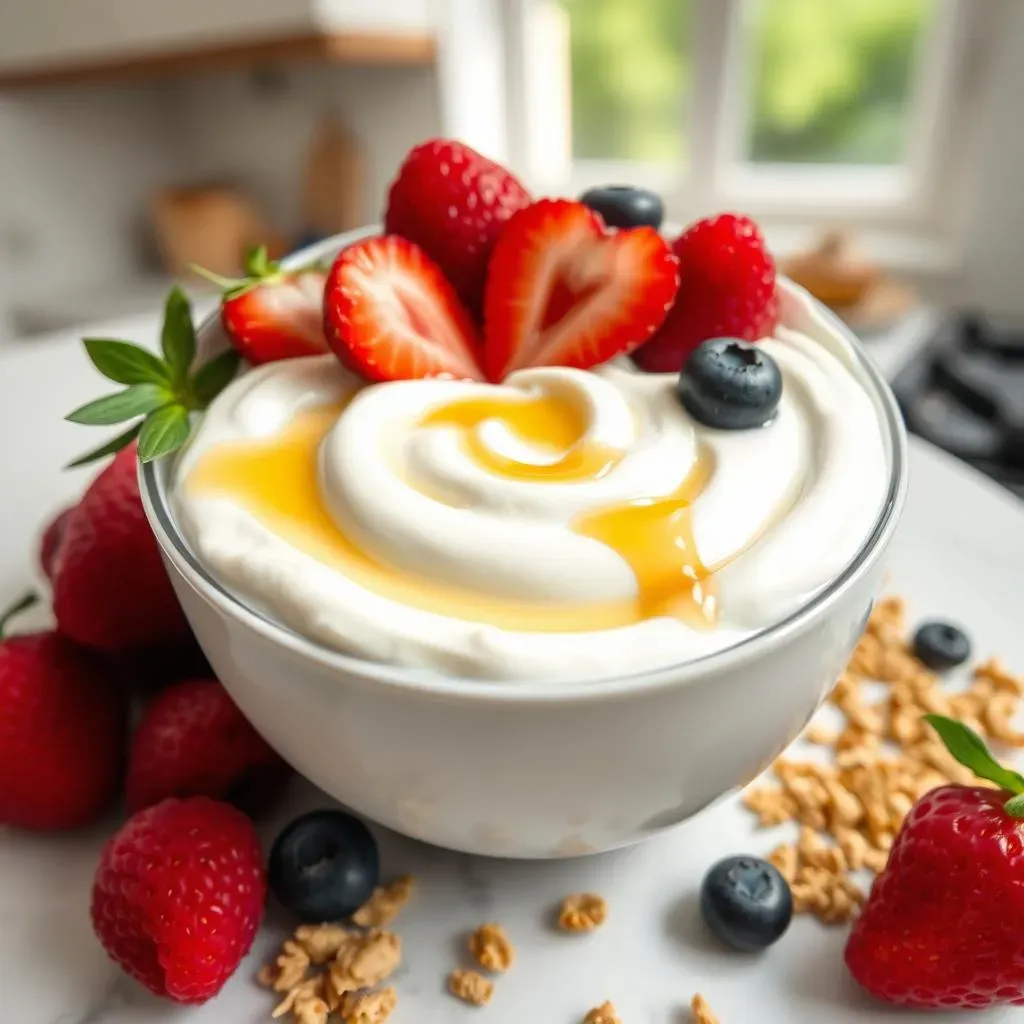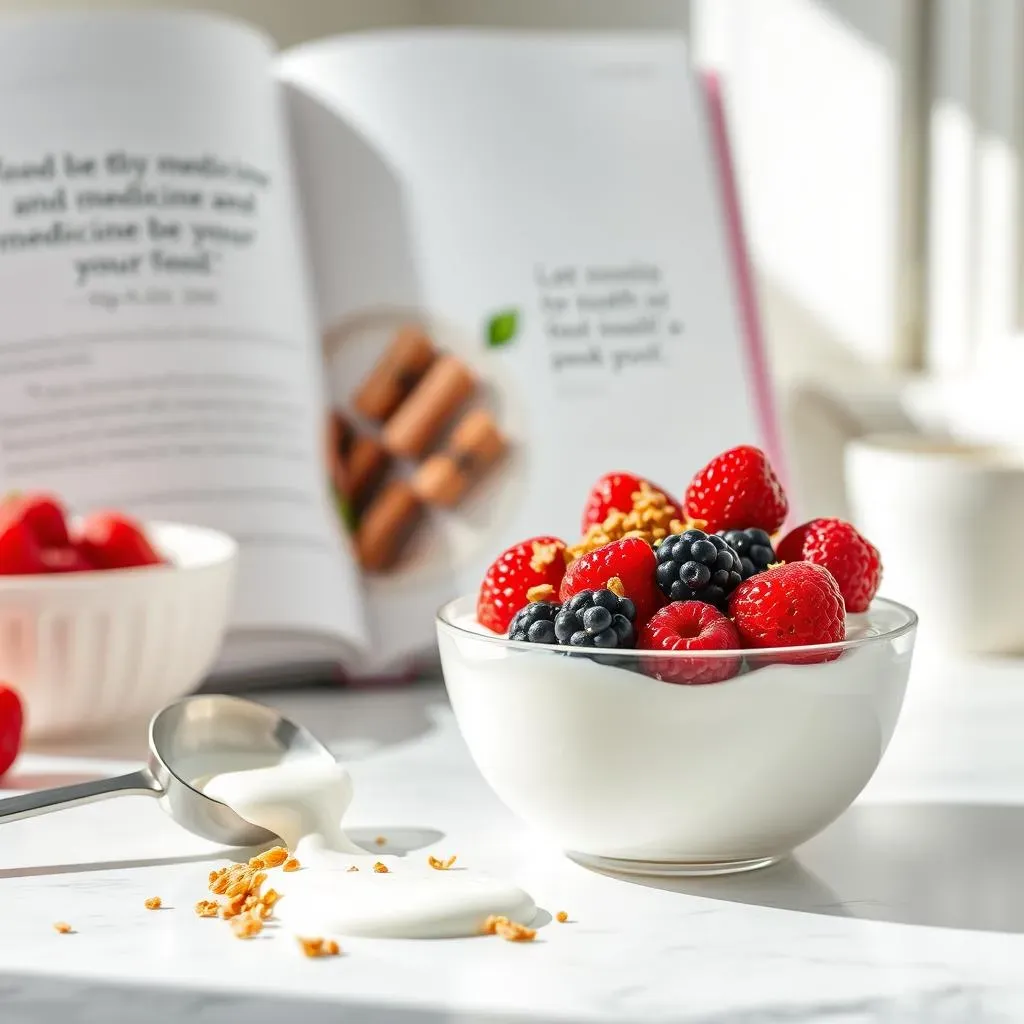Table of Contents
Looking for healthy and delicious ways to incorporate more protein into your diet? Look no further than low fat Greek yogurt recipes! This creamy, tangy superfood is incredibly versatile and can be used in everything from breakfast bowls to decadent desserts. Forget those sugary, processed snacks – with a few simple ingredients and creative ideas, you can transform plain low fat Greek yogurt into a culinary masterpiece.
Making Homemade Low Fat Greek Yogurt: A Simple Guide

Making Homemade Low Fat Greek Yogurt: A Simple Guide
The Magic of Homemade Yogurt
so you're thinking about making your own low fat Greek yogurt? Awesome! It's way easier than you might think, and the taste is incredible. Plus, you get to control exactly what goes in it – no weird additives or excessive sugar. Seriously, once you try homemade, you might never go back to store-bought. It's a game changer for breakfast, snacks, and even cooking!
The best part? You don't need any fancy equipment. A slow cooker is ideal, but you can also use an Instant Pot or even just a regular pot on the stove. The key is patience and a good thermometer. Trust me, the little bit of effort is totally worth it. Get ready to impress yourself (and your friends) with your yogurt-making skills!
Gathering Your Supplies
Alright, let's get down to business. To make your own low fat Greek yogurt, you'll need a few essential items:
- Low Fat Milk: Obviously! Start with a gallon of your favorite low fat milk.
- Plain Yogurt with Live Cultures: This is your starter. Make sure it says "live and active cultures" on the label.
- Thermometer: A must-have for accurate temperature control.
- Slow Cooker (or Instant Pot/Pot): Your trusty cooking appliance.
- Strainer: For that thick, Greek yogurt consistency.
- Cheesecloth or Nut Milk Bag: To line the strainer and catch the whey.
- Time: This isn't a quick process, but most of the time is hands-off!
Don't skimp on the starter yogurt! The live cultures are what make the magic happen, so choose a good quality brand. Also, that thermometer is your best friend here. Temperature is key for successful yogurt making.
Step-by-Step Instructions
Here's the breakdown of how to turn milk into creamy, dreamy low fat Greek yogurt:
- Heat the Milk: Pour your milk into the slow cooker and heat on low for 2-3 hours, or until it reaches 180°F (82°C). This pasteurizes the milk and creates a better environment for the cultures to thrive.
- Cool the Milk: Turn off the slow cooker and let the milk cool down to 110-120°F (43-49°C). This is the ideal temperature for the live cultures to do their thing.
- Add the Starter: Gently whisk in about 2 tablespoons of your plain yogurt with live cultures. Make sure it's well combined.
- Ferment: Cover the slow cooker and wrap it in towels to keep it warm. Let it ferment for 6-12 hours, or until it reaches your desired tartness. The longer it ferments, the tangier it will be.
- Refrigerate: Once fermented, refrigerate the yogurt for at least 2 hours to stop the fermentation process.
- Strain: Line your strainer with cheesecloth or a nut milk bag and place it over a bowl. Pour the yogurt into the strainer and let it sit in the refrigerator for several hours, or overnight, to strain out the whey. The longer it strains, the thicker your Greek yogurt will be.
Pro Tip: Don't throw away the whey! It's packed with protein and can be used in smoothies, baking, or even as a plant fertilizer.
Creative Low Fat Greek Yogurt Recipes: Beyond Breakfast

Creative Low Fat Greek Yogurt Recipes: Beyond Breakfast
Savory Dips and Spreads
Who says low fat Greek yogurt is just for breakfast? It's a fantastic base for savory dips and spreads that are perfect for parties, snacks, or even a light lunch. Think about swapping out mayo or sour cream for Greek yogurt in your favorite recipes – you'll get a protein boost and cut down on the fat without sacrificing flavor. Seriously, it's a total win-win!
One of my go-to's is a simple cucumber-dill dip. Just mix Greek yogurt with grated cucumber, fresh dill, garlic, lemon juice, and a pinch of salt and pepper. It's amazing with pita bread, veggies, or even as a topping for grilled chicken or fish. Another great option is a spicy feta dip with roasted red peppers and a touch of chili flakes. The possibilities are endless, so get creative and experiment with your favorite flavors!
Healthy Baking Swaps
Did you know that low fat Greek yogurt can be a secret weapon in your baking arsenal? It adds moisture and tenderness to baked goods while also bumping up the protein content. I love using it as a substitute for oil or butter in muffins, cakes, and even brownies. You'll be amazed at how delicious and guilt-free your treats can be!
For example, try swapping half the oil in your favorite muffin recipe with an equal amount of Greek yogurt. You'll get a lighter, fluffier muffin with fewer calories and more protein. I've also made incredible chocolate chip cookies using Greek yogurt in place of some of the butter. They were so good, no one even knew they were "healthy-ish"! It's all about finding the right balance and experimenting with different ratios to see what works best for you.
Swap | Benefit |
|---|---|
Oil/Butter | Adds moisture & protein |
Sour Cream/Mayo | Lower fat, higher protein |
Dessert Delights
let's talk dessert. I know what you're thinking – can low fat Greek yogurt really make a satisfying dessert? The answer is a resounding YES! With a little creativity, you can whip up some seriously delicious and healthy desserts that will satisfy your sweet tooth without derailing your diet. From parfaits to frozen treats, the options are endless.
One of my favorite dessert recipes is a simple Greek yogurt parfait with berries and granola. It's quick, easy, and packed with protein and antioxidants. For a more indulgent treat, try making a Greek yogurt cheesecake. It's surprisingly light and creamy, and you can customize it with your favorite toppings. And if you're looking for a refreshing summer treat, try freezing Greek yogurt with fruit and a touch of honey for a healthy and delicious popsicle. Trust me, you won't be disappointed!
Tips for the Best Low Fat Greek Yogurt Recipes

Tips for the Best Low Fat Greek Yogurt Recipes
Achieving Yogurt Perfection
Want to take your low fat Greek yogurt recipes to the next level? It's all about mastering a few simple tricks and techniques. From choosing the right ingredients to perfecting your straining method, these tips will help you create yogurt that's consistently creamy, tangy, and delicious. Trust me, once you nail these basics, you'll be a yogurt pro in no time!
First and foremost, start with high-quality ingredients. The better the milk and starter yogurt, the better your final product will be. Don't be afraid to experiment with different brands and varieties to find your perfect combination. Also, pay close attention to temperature. Accurate temperature control is crucial for successful fermentation. And finally, be patient! Yogurt making takes time, so don't rush the process. Let the yogurt ferment and strain for the recommended amount of time to achieve the best results.
Nutritional Benefits of Low Fat Greek Yogurt Recipes & FAQs

Nutritional Benefits of Low Fat Greek Yogurt Recipes & FAQs
Unlocking the Power of Protein and Probiotics
Let's dive into why low fat Greek yogurt recipes are such a nutritional powerhouse! First and foremost, we're talking about protein. Greek yogurt is packed with it, which is essential for building and repairing muscle, keeping you feeling full and satisfied, and even boosting your metabolism. Seriously, if you're looking to add more protein to your diet, Greek yogurt is a no-brainer.
But it's not just about the protein. Greek yogurt is also a great source of probiotics, those beneficial bacteria that live in your gut and play a crucial role in digestion, immunity, and even mental health. A healthy gut is a happy gut, and incorporating Greek yogurt into your diet is a delicious way to support your gut microbiome. It's like giving your body a little boost from the inside out!
Addressing Your Burning Questions
Got questions about low fat Greek yogurt? You're not alone! I get asked about it all the time, so let's tackle some of the most common FAQs. One of the biggest concerns is often about sugar content. While some flavored yogurts can be loaded with added sugar, plain low fat Greek yogurt is naturally low in sugar. That's why I always recommend starting with plain and adding your own sweeteners and flavorings, so you can control exactly what goes into your body.
Another frequent question is about lactose intolerance. Many people with lactose intolerance can tolerate Greek yogurt because the fermentation process breaks down much of the lactose. However, it's always best to start with a small amount and see how your body reacts. And if you're still concerned, there are lactose-free Greek yogurt options available. It's all about finding what works best for you and your individual needs.
Question | Answer |
|---|---|
Is Greek yogurt high in sugar? | Plain Greek yogurt is low in sugar. |
Can lactose intolerant people eat Greek yogurt? | Many can tolerate it due to fermentation. |
What are the benefits of probiotics? | Supports digestion, immunity, and mental health. |
Conclusion: Embrace the Versatility of Low Fat Greek Yogurt Recipes
From crafting your own creamy base to exploring a world of flavorful recipes, low fat Greek yogurt offers a delicious and nutritious way to enhance your diet. Whether you're aiming for a protein-packed breakfast, a guilt-free dessert, or a healthy snack, these recipes provide endless possibilities. So, grab a spoon, experiment with your favorite flavors, and enjoy the journey of discovering all that low fat Greek yogurt has to offer. Your body (and your taste buds) will thank you!
